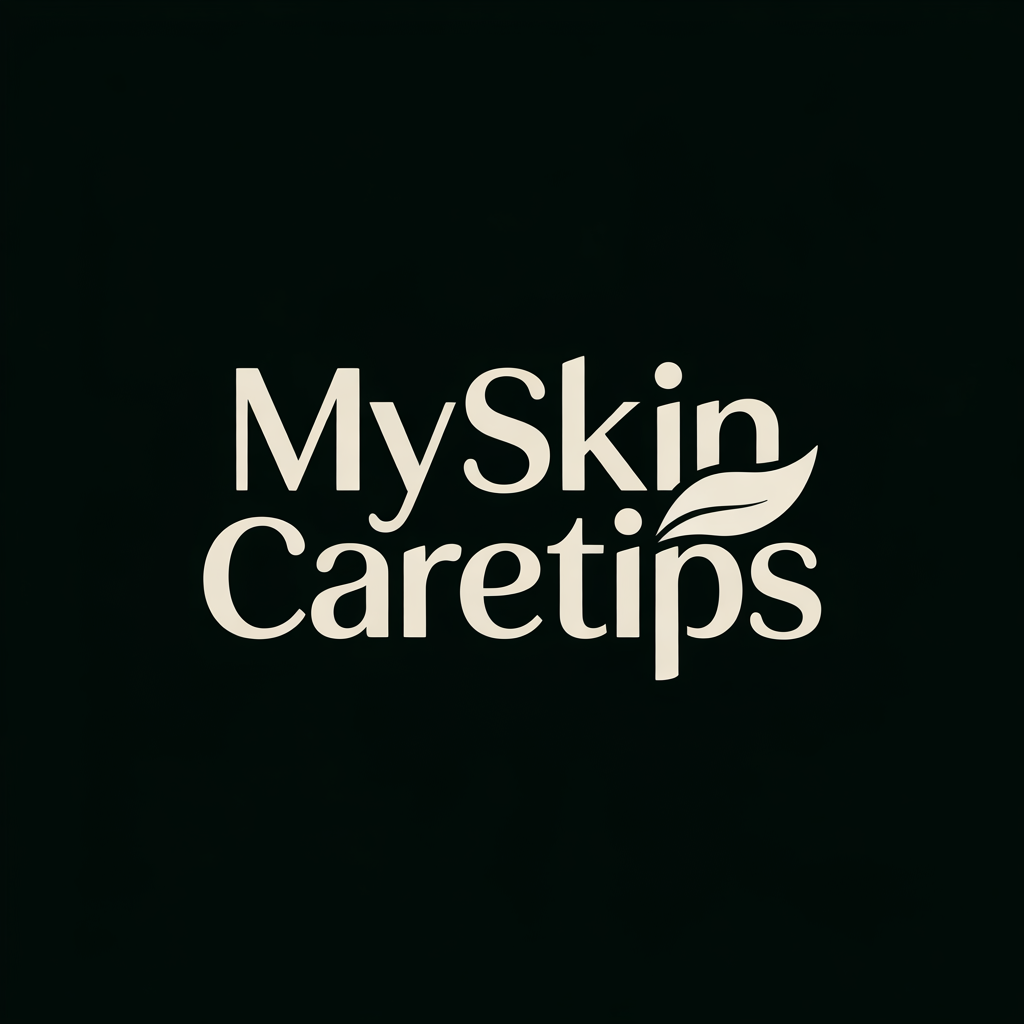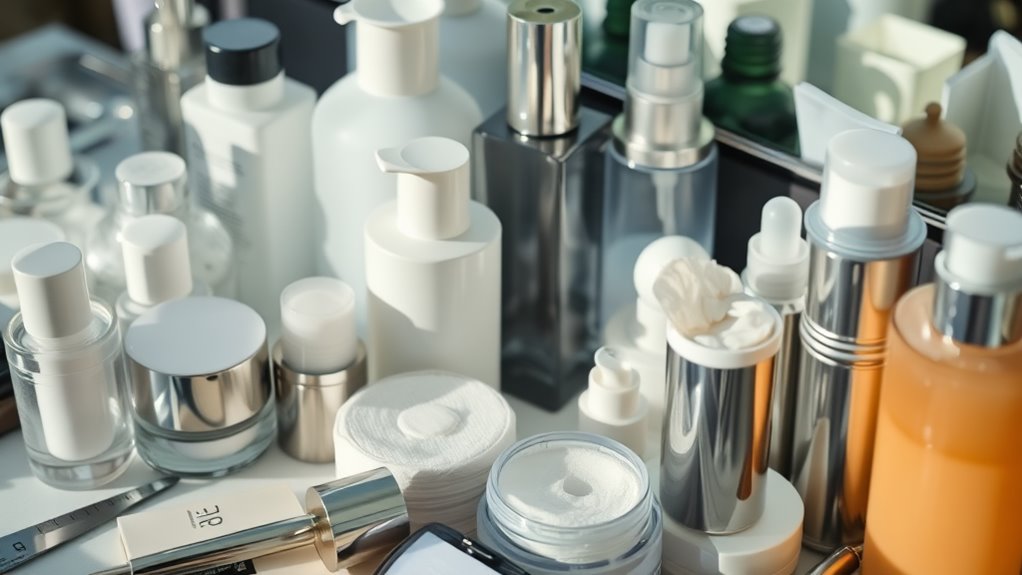Can You Spot the Skincare Lie in Your Routine.
In your routine, you might think over-cleansing clears breakouts, but that’s a myth—it disrupts your skin’s barrier and worsens issues, as studies confirm. Don’t fall for ‘natural’ ingredients over evidence-based ones like retinoids or hyaluronic acid, which actually boost collagen and hydration. Spot misleading claims by checking for clinical trials, not vague promises. By identifying these lies, you’ll build healthier skin, with more strategies waiting to transform your approach.
Key Takeaways
- Over-cleansing disrupts your skin’s barrier; limit to twice daily for healthier results.
- Natural ingredients aren’t always better; prioritize evidence-based actives like retinoids.
- Vague claims like “instantly reverses aging” lack scientific support; seek clinical evidence.
- Viral trends, such as jade rolling, provide minimal benefits; focus on proven options.
- Consult a dermatologist for personalized advice, avoiding unverified social media tips.
Common Skincare Myths Exposed
While many believe that washing your face multiple times a day prevents breakouts, this myth can actually strip your skin’s natural oils and worsen issues. Over-cleansing disrupts your skin’s protective barrier, increasing sensitivity and inflammation, as evidence from dermatological studies confirms.
Skincare truths reveal that gentle, twice-daily cleansing suits most skin types, allowing natural oils to maintain hydration. One crucial tip for lasting results is to incorporate simple changes based on expert advice to avoid common pitfalls.
Another myth: scrubbing vigorously clears pores, but it damages your skin’s surface, promoting breakouts. Instead, opt for soft exfoliation based on expert guidelines.
Skincare truths emphasize evidence-based practices, like using non-comedogenic products, to prevent problems without harsh routines.
Incorporating these insights helps you achieve a better beauty routine.
Debunking Ingredient Misconceptions
Many people believe that “natural” ingredients like essential oils are always superior, but experts show this isn’t always true; rigorous studies demonstrate that synthetic alternatives can be safer and more effective for specific skin concerns. This misconception can lead to premature skin aging by ignoring proven strategies for maintaining youthful skin.
You might think antioxidants from fruits are the best anti-agers, yet research reveals that lab-synthesized versions, like retinol derivatives, deliver consistent results without the variability of natural sources, reducing irritation risks.
Don’t overlook that “hypoallergenic” claims often mislead; evidence from dermatological trials indicates some plant extracts cause more reactions than their purified synthetic counterparts.
Experts emphasize basing your choices on peer-reviewed data, not marketing hype, to tailor routines that truly benefit your skin’s unique needs. Always consult professionals for personalized advice.
Additionally, the blog post highlights how anti-aging creams are formulated with ingredients that have been scientifically proven to promote youthful skin.
Signs of False Product Claims
How can you spot false claims on skincare products? You examine labels and ads for telltale signs, such as vague buzzwords or unsubstantiated promises. Backed by dermatological research, these indicators help you avoid misleading marketing. To complement this, implementing actionable tips from trusted skincare advice can prevent common pitfalls. Additionally, by eliminating common mistakes as shared in personal skincare transformations, you can achieve noticeable improvements in skin health.
| Sign of False Claim | Example | Why It’s Misleading |
|---|---|---|
| Vague or exaggerated promises | “Instantly reverses aging” | Lacks clinical trials to prove efficacy. |
| Unsupported ingredient claims | “Contains rare superfruit” | No evidence it delivers benefits. |
| Before-and-after photos | Doctored images | Often manipulated, not representative. |
| Miracle-in-a-bottle language | “Cures all skin issues” | Oversimplifies complex dermatology. |
| No scientific references | Lacks cited studies | Indicates unverified or fabricated claims. |
The Truth Behind Popular Trends
With the signs of false claims in mind, you might wonder what lies beneath viral skincare trends. Many promise overnight transformations, but scientific evidence often debunks these.
For instance, jade rolling claims to reduce puffiness through energy flow, yet studies show it’s merely a gentle massage with minimal benefits. LED masks hype collagen boosting, but research confirms efficacy only with specific wavelengths and consistent use.
Trends like detoxifying clays sound appealing, though experts note skin detoxes via the liver, not topical products. You’re better off with evidence-backed options; retinol genuinely improves wrinkles, as clinical trials demonstrate, while vitamin C brightens skin with proven antioxidant effects. However, for those dealing with acne, avoiding critical mistakes in spot treatments is essential to achieve clearer skin.
Always scrutinize trends against peer-reviewed data to separate hype from reality. Additionally, for acne-prone skin, exploring effective spot treatments can provide real results in managing breakouts, as supported by dermatological research.
How to Spot Misleading Advice
Ever wonder why misleading skincare advice spreads so quickly?
It’s often due to social media algorithms and influencers prioritizing virality over accuracy. You spot it by examining sources: reputable advice comes from dermatologists or peer-reviewed studies, not anonymous blogs or unverified testimonials.
Watch for red flags like absolute claims—such as “this cures acne overnight”—which lack evidence and oversimplify complex skin biology. Always question products promising instant results without clinical trials; they’re designed to exploit insecurities.
Cross-reference information with trusted organizations like the FDA or American Academy of Dermatology. By demanding evidence-based claims, you’re building a smarter routine that avoids hype and protects your skin’s health.
For instance, another common mistake to watch for is over-exfoliating, which can damage your skin barrier and lead to irritation.
Likewise, overwashing can affect skin health by disrupting moisture balance and potentially triggering breakouts.
Real Science in Skincare Routines
You rely on evidence-based ingredients to build an effective skincare routine that delivers real results.
We’ve debunked persistent myths, showing you what’s backed by solid research and what’s not.
Now, implement science-backed routines that align with clinical evidence to enhance your skin’s health.
Moreover, discover the benefits of a key ingredient renowned for its effectiveness in treating breakouts on acne-prone skin.
Additionally, delve into the science behind natural beauty ingredients that truly offer transformative results for your skincare.
Evidence-Based Ingredients
While myths often dominate skincare discussions, evidence-based ingredients like retinoids and hyaluronic acid offer proven benefits through rigorous clinical studies.
You can incorporate retinoids to boost collagen production, reducing fine lines and improving skin texture, as supported by randomized trials showing up to 50% wrinkle reduction after consistent use.
Hyaluronic acid, meanwhile, draws moisture into your skin, enhancing hydration and elasticity—studies confirm it holds up to 1,000 times its weight in water, leading to plumper, more resilient skin.
To optimize your routine, choose products with these ingredients at clinically effective concentrations; always patch test and consult a dermatologist.
By focusing on science-backed options, you’re building a routine that delivers real, measurable results without falling for fads.
This approach empowers you to make informed choices for healthier skin.
Skincare Myths Debunked
Many myths circulate in skincare, yet science dismantles them with solid evidence.
You might believe that daily exfoliation banishes blemishes, but research reveals it strips your skin’s protective barrier, leading to irritation and sensitivity. Instead, over-exfoliating disrupts the microbiome, worsening issues like acne.
Another falsehood: pricey products outperform budget ones. Studies show efficacy depends on active ingredients, not cost—think proven actives like niacinamide over flashy labels.
Don’t buy into “detoxifying” facials; your liver and kidneys handle toxins, not topical treatments. Science confirms that sun protection and hydration matter most, not exaggerated claims.
Science-Backed Routines
Science guides effective skincare routines by emphasizing routines backed by clinical studies, ensuring you achieve healthier skin without falling for hype.
You prioritize ingredients like retinoids, proven in randomized trials to boost collagen, or niacinamide, which research shows reduces inflammation.
Build your regimen around peer-reviewed evidence: apply sunscreen daily, as studies confirm it prevents UV damage, and use antioxidants like vitamin C to neutralize free radicals, per dermatological research.
Don’t overlook your skin type—clinical data guides choices, like gentle cleansers for sensitive skin to avoid irritation.
Top Lies on Product Labels
When you scan a skincare product’s label, you’ll often spot deceptive claims that promise miracles without evidence. These statements, like “instant results” or “100% natural,” mislead you by exploiting vague terminology without clinical support. Research shows that such labels prioritize marketing over science, potentially wasting your time and money. Understanding your skin type can further guide you in choosing products that align with your specific needs for optimal results. Moreover, skipping key steps such as toner can negatively impact skin health, as explored in various personal and expert insights.
To break it down, here’s a table of common lies and their realities:
| Common Lie | Why It’s Deceptive | Evidence-Based Truth |
|---|---|---|
| “All Natural” | Lacks regulatory definition | Seek certified organic ingredients |
| “Anti-Aging Miracle” | Exaggerates unproven effects | Look for retinol or peptides with studies |
| “Hypoallergenic” | Not standardized by authorities | Verify through patch testing |
| “Clinically Proven” | May use weak or biased trials | Demand peer-reviewed evidence |
Don’t fall for these; base decisions on verified data to protect your skin.
Building a Fact-Based Regimen
Now that you’ve uncovered common skincare deceptions, it’s time to construct a fact-based regimen that prioritizes evidence over hype.
You start by assessing your skin type and goals using peer-reviewed research, like studies from the Journal of the American Academy of Dermatology.
Choose ingredients with proven efficacy, such as broad-spectrum SPF to prevent UV damage or retinoids for wrinkle reduction, verified through randomized controlled trials.
Avoid unproven fads; instead, consult a board-certified dermatologist for personalized advice.
Track results objectively with photos and notes, adjusting based on real data, not social media claims.
This approach ensures your routine delivers tangible benefits, fostering long-term skin health without falling for myths.

